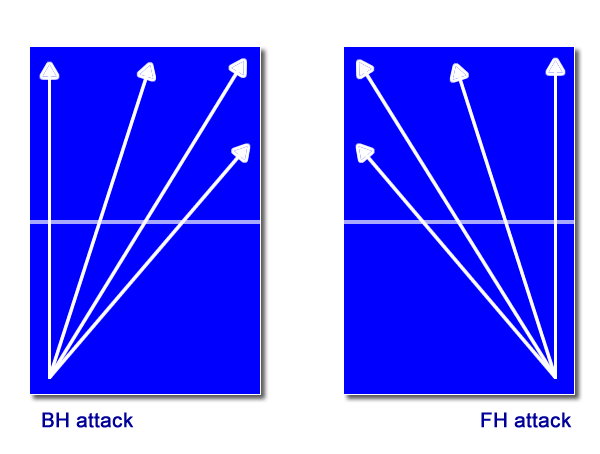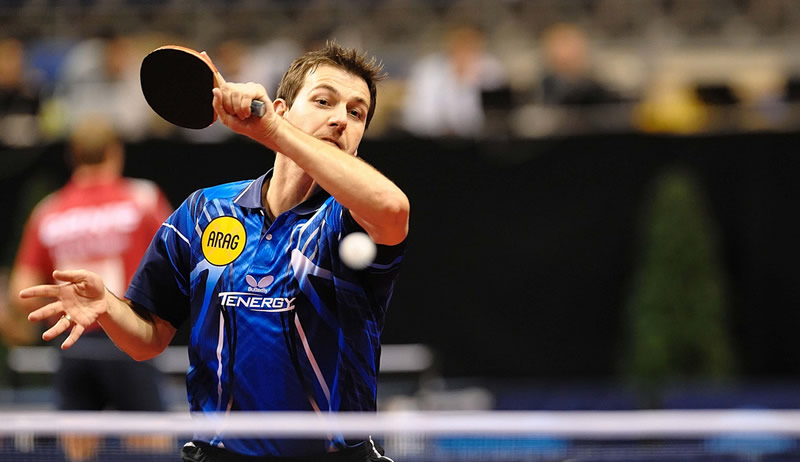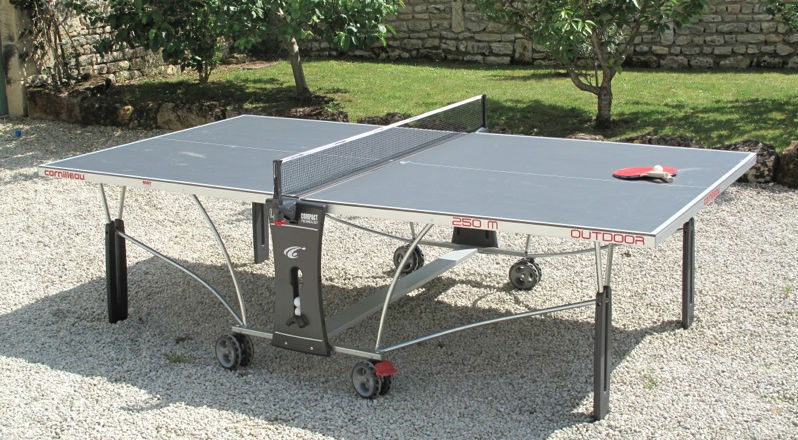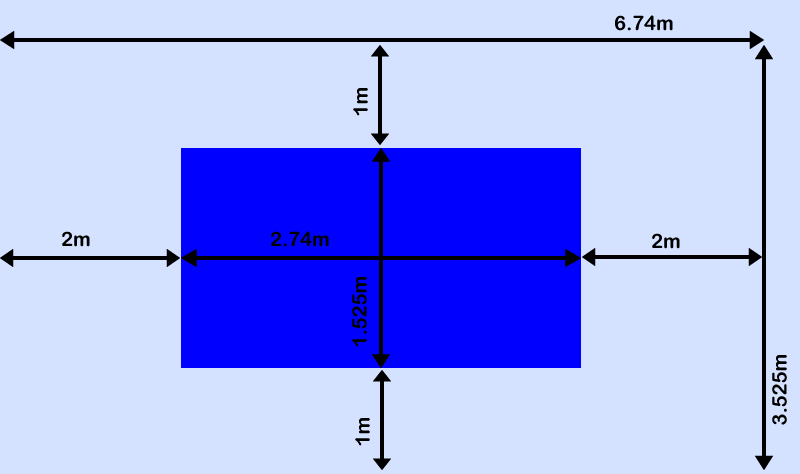This week’s blog post is dedicated to the great Larry Hodges. If you don’t know who Larry Hodges is, where the heck have you been? This man is MR TABLE TENNIS.
In short, Larry is a table tennis coach from the USA. He coaches. He plays. He writes. He organises. He sits through lots of committee meetings with other table tennis aficionados. And then blogs about it. He is the world’s leading table tennis evangelist (I have just given him this title). You can read more about Larry on his website.
Why am I writing about Larry Hodges? Quite simply, I think he’s great! He’s an inspiration to me, both as a coach and a writer. In this blog post, I’m going to briefly explain my love of Larry, shamelessly plug his new book (and a previous book which is the best table tennis book I’ve ever read) and share a recent interview, where he reveals his most important table tennis tip he’s ever written.
Writing machine
Larry Hodges can write and write and write and then write some more. He is a writing machine. I’m genuinely amazed (and jealous) by how effortless he makes it look.
I aim to publish a blog post once a week. Most weeks it feels like a struggle. Some weeks it feels like a titanic battle between my brain, hands and keyboard to form even a few sentences.
By contrast, Larry blogs five times a week. Plus he shares links of the latest table tennis content on the web each day. Plus he publishes a tip of the week. His writing is easy to read, informative, often humorous and always conveys his passion for table tennis.
If you haven’t stumbled across his work yet, let me firmly point you in the right direction.
Here’s his blog, which he updates 5 days a week: www.tabletenniscoaching.com/blog
Here’s his tips of the week, which he updates once a week: www.tabletenniscoaching.com/TipOfTheWeek
Books
If that wasn’t enough, Larry Hodges is the author of several table tennis books. In my opinion, Table Tennis Tactics for Thinkers is the greatest table tennis book ever written. If you only ever buy one table tennis book, buy this one. Every player should read it. As the title suggests, the book is all about tactics. Every aspect of table tennis is covered in over 200 pages. Read it. Learn from it. You will become a better player. I have a signed copy which I have read start to finish twice and dipped in and out many other times. You can buy Table Tennis Tactics for Thinkers on Amazon UK and Amazon USA.
Larry has just released his new book, More Table Tennis Tips. This book includes all 150 ‘tips of the week’ from his blog from 2014-2017, in one volume, in logical progression. There is so much good advice in this book, covering so many aspects of table tennis. It’s very easy to read. You can read start to finish or just dip in and out to the sections which are relevant to you. It’s like having your own personal coach in your pocket. You can buy More Table Tennis Tips on Amazon UK and Amazon USA.
Larry has published many other table tennis books. You can see the full list on his website.
Make America Great Again (the Hodges way, not the Trump way)
Larry Hodges is much more than a writer though. He is a professional coach and puts in long hours each week doing group coaching and 1-to-1 coaching with players of all standards. He has been at the forefront of developing table tennis in the USA over the past 25 years.
In particular, he has been a vocal champion of the full-time training centre. He set up the first full-time training centre in 1992 and now there are over 90. Junior USA players are now competing with the very best in tournaments around the world and it’s only a matter of time before this translates into success in the professional game.
In the UK, we have a severe lack of full-time training centres. This is something we should learn from and adopt from our friends in the USA.
Interview with Larry Hodges
So that’s enough of my love fest for one week. I hope you don’t feel too nauseous yet! Let’s hear from the great man himself. I caught up with Larry a couple of weeks ago and asked him a few questions. Here’s the interview, including Larry’s greatest ever table tennis tip…
Tom: What do you enjoy most about coaching?
Larry: I’m a problem-solver, and coaching is basically solving the problem of getting a player from Point A, where he is now, to Point B, where he wants to be. So coaching is no different than solving a crossword puzzle or brain teaser – and I love doing that! Plus, of course, there’s that great joy of developing a player until he’s about to beat you, and then you pull out that one serve you’ve been saving for years. More seriously, I get as much fun now coaching a player to a title as I ever did winning one myself.
Tom: What do you like the least about coaching?
Larry: It’s mentally and physically exhausting. Mentally, it’s sometimes tough getting started when I start coaching each day, though that part actually gets easier as you get into the session. Physically, it gets more difficult as the sessions go on, since I’m 57. One other thing I sometimes don’t like is that you’ll sometimes spend years with a student, and then one day he disappears, and you never see him again. (Yay for Facebook, where I can secretly spy on former students.)
Tom: What’s the best moment of your table tennis career so far (as player or coach)?
Larry: If you make me narrow it down to one, I’ll implode. I’m going to cheat and give a Top Ten list – not necessarily in order.
- My induction into the U.S. Table Tennis of Fame in 2003.
- Opening the Maryland Table Tennis Center in 1992.
- Coaching Team USA (unseeded) to the semifinals at the 1994 World Youth Cup Championships in front of 30,000 fans.
- Coaching at USA Nationals, U.S. Open, USA Team Trials, many others – so many of them, so many great performances and memories.
- 1980 North Carolina Open Champion – my first Open Singles title. I had my picture in the local paper the next day, and signed dozens of autographs.
- Coaching the Baltimore Orioles in 2013. I coached Brady Anderson and J.J. Hardy an hour each at MDTTC, and Darren O’Day about ten times, and spent four hours in their clubhouse taking challenges. Here’s my blog on it, and video (79 sec).
- The publication of Table Tennis Tactics for Thinkers. I spent years thinking about writing this book, but just wasn’t sure if I was ready. It was a void that needed to be filled. It’s currently the top-selling book on table tennis at Amazon. (My previous best seller, Table Tennis: Steps to Success, sold over 30,000 copies and was translated into Chinese, Korean, Indonesian, Malaysian, and Hebrew, but it is now out of print. I’m planning a new version eventually.) I now have eight books on table tennis. The newest is More Table Tennis Tips.
- I’ve been on TV many times (including twice on ESPN), but the highlight has to be the CNN/Headline News feature on the Maryland Table Tennis Center back in the 1990s. It was about three minutes long, and was shown worldwide over and over for 24 hours, and seen by tens of millions of people. I was interviewed on it.
- Two Days of Terror. Around 1990 or 1991, for the first two days at the U.S. Open Team Championships I played like a maniac, beating hordes of top players without any bad losses. If I had stopped then I would have been rated over 2500 (strong enough to make U.S. National Team). On the third and final day, my teammates showed up late, and I ended up getting a last-minute five-minute warm-up with a really bad player who sprayed the ball all over the table with long pips. Between that, and my irritation at my teammates, I could barely play – and against two weaker teams and six lower-rated players, I went 0-6. I went into the tournament rated 2272, and despite that finish came out 2273.
- Meeting and hitting with numerous celebrities: Pretty much the entire 2013 Baltimore Orioles baseball team; actors and actresses Susan Sarandon, Julia Dreyfus, and Adoni Maropis; comedians Judah Friedlander and Frank Caliendo; former Secretary of State Henry Kissinger; basketball star David Robinson; basketball free throw star Ted St. Martin; football star Errict Rhett; billiards star Jeanette “Black Widow” Lee; Olympic Figure Skating Coach Audrey Weisiger; Delaware Governor Jack Markell; Oscar Goodman, former mayor of Las Vegas; Anthony Williams, former mayor of Washington DC; New York Times Crossword Puzzle Editor Will Shortz; world poker champion Tom McEvoy; much of the U.S. Olympic Archery, Tae Kwon Do, and Judo teams (circa late 1980s); and of course many of the world’s best table tennis players – even got to eat dinner with the Swedish Team at the Worlds one year (Waldner, Persson, etc.).
Tom: You have written a lot of table tennis tips. If you had to pick one tip which would make the biggest impact to a player’s game, which would you choose?
Larry: That’s a really tough one, and it’s tempting to do another “Top Ten,” but I’m going to go with How to Move Up a Level. I’ve seen so many players have difficulty improving because they only worked on parts of their game.
Tom: Who is the toughest opponent you’ve ever played against?
Larry: The first 5-10 years I played that would have been any lefty with a good backhand hit, and anyone with short pips. (I finally figured both out.) From long ago, two players I used to struggle against were Bill Sharpe (lefty with long pips on backhand, no sponge, very aggressive against anything that wasn’t looped) and Jeff Steif (smart player who figured out my weaknesses). I never beat Bill. I lost something like the first 14 times against Jeff before winning the last time we ever played – in the match to make the “A” Division at the U.S. Open Teams many years ago, with us winning 5-4! My teammates were Dell, who won all three (I won two), Connie, and 13-year-old future Olympian Todd Sweeris. All four of us are now in the U.S. Table Tennis Hall of Fame!
Tom: You’re playing in the Olympic final. The score is 3-3 and 9-9 in the deciding game. It’s your serve. What two serves will you use?
Larry: That’s a highly tactical question. If I were playing someone my level, I might think back over the match at what “trick serves” worked, one where I might be able to win a cheap point. Then I’d use that one, and then a “third-ball serve,” probably short to the middle, to cut off angle, so I can follow with a forehand. I often liked to serve very low, short side-top, faking backspin, which most opponents would return somewhat passively, giving me an easy forehand. Or perhaps a big breaking serve into the wide backhand, where most opponents topspin it back softly, again giving me a relatively easy forehand.
But this is the Olympic Final, 9-9 in the last game. Since umpires rarely call illegal serves, I’d just hide contact, spit on the ball as it goes behind my head, and watch my opponent put it in the net.
Tom: Which player in the US has biggest potential to break top 20 in the world?
Larry: Never in U.S. history have we had so many top cadets and juniors who have the potential to be great. This is because of the rise of the full-time training center – we’ve gone from one in 1992, to about eight in 2007, to over 90 now. The first name that comes to mind on the boys’ side is of course Kanak Jha, U.S. Men’s Champion at age 16 and #13 in the world in Under 18. But there’s an incredible list of others his age or a year or so younger who are knocking on his door, and sometimes beating him. On the girls’ side, Crystal Wang and Amy Wang both have the potential, if they have the overwhelming desire to go for it.
Tom: You’ve got the afternoon off. No table tennis. No sci-fi writing. What are you going to do?
Larry: Crossword puzzle, movie, and a great sci-fi novel, with lots of popcorn and Mountain Dew, and some Rocky Road ice cream!
Tom: If you weren’t a table tennis player and coach, what other sport would you like to be a professional in?
Larry: When I was a kid I was an Orioles baseball fan, and dreamed of being a major league baseball player. (That and boxing were the only sports I ever followed as a kid.) When I was twelve, I got my dad to make me a wooden home plate. I put it on my bed, then put strings across the walls so I could see the actual strike zone. Then I’d spend hours studying it. When I did play, I absolutely refused to swing at anything outside the strike zone. Or anything near the edges. Or pretty much anything unless I had two strikes. The coach would yell at me all the time, “Swing the bat!” I’d lead the team in walks and score a lot of runs, but didn’t get many hits. But I did have a game-winning bases-loaded triple once (got thrown out at the plate, it was the top half of the last inning).
My most “memorable” moment in baseball, alas, was sort of embarrassing. I always wanted to play third base like Brooks Robinson, but couldn’t make the throw from there or shortstop. So I normally played second. But one day when I was about 13 I was playing right field. It was the last inning, we were up by a run, two outs, but they had a runner at second. The next batter singled to right. I fielded it as the runner was rounding third. I knew I couldn’t make the throw, but our team’s big star, who normally pitched but was playing center field at the time, came running over. I flipped the ball to him, he threw a perfect strike to the plate to nail the runner, and we won. Everyone poured out in the field celebrating and congratulating the guy who’d made the throw, but I sort of stood out there, thinking about it. I think that’s when I realized I’d never be a major league player.
Tom: Any big table tennis plans in the next five years?
Larry: Develop five Olympic Gold Medalists, nudge table tennis past basketball, football, and soccer (that’s football outside the U.S.!) in popularity, and be the first person to play table tennis on Mars. Oh, and several books planned: Parents Guide to Table Tennis; Table Tennis Fundamentals (a rewrite/update of my Table Tennis: Steps to Success), and of course in three years I’ll have Still More Table Tennis Tips.
I was recently named chair of the U.S. Coaching Committee. My focus there will be on recruiting and training professional coaches to set up and run full-time centers and junior programs. Right now USATT uses the ITTF coaching courses to certify coaches, but all we do is announce the course, and teach coaching to whoever shows up. We don’t do much serious recruiting, i.e. selling the benefits of being a full-time professional coach (you actually make good money while playing and coaching a game!), and we don’t teach them how to become a full-time professional coach – recruiting and retaining students, setting up junior programs and other classes, how to maximize income, setting up and running training centers, etc. I want to change this.
Quick fire questions…
Tom: Which is your strongest, forehand or backhand?
Larry: Forehand. (On the backhand I’m pure consistency. On the other hand, I’ve won a lot of matches against players who thought they could overpower my backhand with their backhand, and I’d just rally them down. Smart opponents realize they have to move the ball around, and when they get a weak ball, end it with their forehand – unless they have a really powerful backhand.)
Tom: Do you prefer games up to 11 or up to 21?
Larry: Definitely 21. (I miss being able to serve five times in a row, using each serve tactically. I also don’t like it that an opponent only has to score 33 points to win in most matches, instead of 42.)
Tom: Which is better, poly ball or celluloid ball?
Larry: Celluloid. (Yeah, I know, I have to get used to the new ball…)
Tom: Which is harder to play against, long pimples or short pimples?
Larry: A tie. (They are both equally easy to play – it’s only their level of play that would make them hard to play against. But a player with long pimples who can also attack effectively with the other side – that can be difficult for me to play.)
Tom: If you could start out again, would you be an attacker or defender?
Larry: Defender. (The late Barry Dattel, after watching me chop down a string of 2100-level players with a clipboard, said I’d missed my calling, and should have been a chopper. He was right.)
Tom: Favourite food?
Larry: Rocky Road ice cream!!! (But I also love Kung Pao Chicken, spaghetti – extra sauce, lots of garlic and onion – and have a strange fondness for peanut butter (crunchy!) and jelly sandwiches. I also drink too much Mountain Dew. I try to limit myself to one per day, but when I’m really busy I sometimes look the other way as I sneak a second or third.)
Tom: Favourite TV programme?
Larry: Game of Thrones. (I try not to watch too much TV, but favorites that I currently watch each week are The Walking Dead, Designated Survivor, and 24. I’ve read all the Game of Thrones books and met George R.R. Martin at a convention. Also can’t wait for the next season of House of Cards. Past favorites include West Wing, Star Trek – Original and Next Generation – and M*A*S*H. I sometimes get nostalgic for childhood favorites Gilligan’s Island, Hogan’s Heroes, and Get Smart.)
Tom: Favourite musician?
Larry: John Williams! He is the greatest ever at movie music. He’s been nominated for an even 50 Oscars, and won five times. Some of his scores include his five Oscar winners for Star Wars, Schindler’s List, Jaws, E.T. the Extra-Terrestrial, and Fiddler on the Roof, and others such as Jurassic Park, Harry Potter, Raiders of the Lost Ark, Superman, Saving Private Ryan, and, well, here’s a list of his Oscar Nominees! The guy’s incredible.
The post The best table tennis tip ever (interview with Larry Hodges) appeared first on Tom Lodziak Table Tennis Coaching.
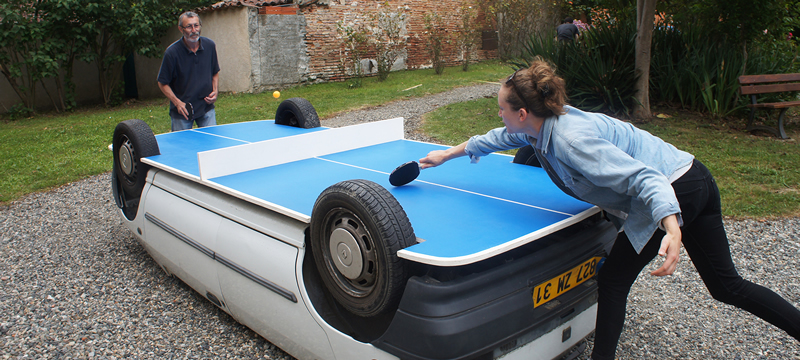
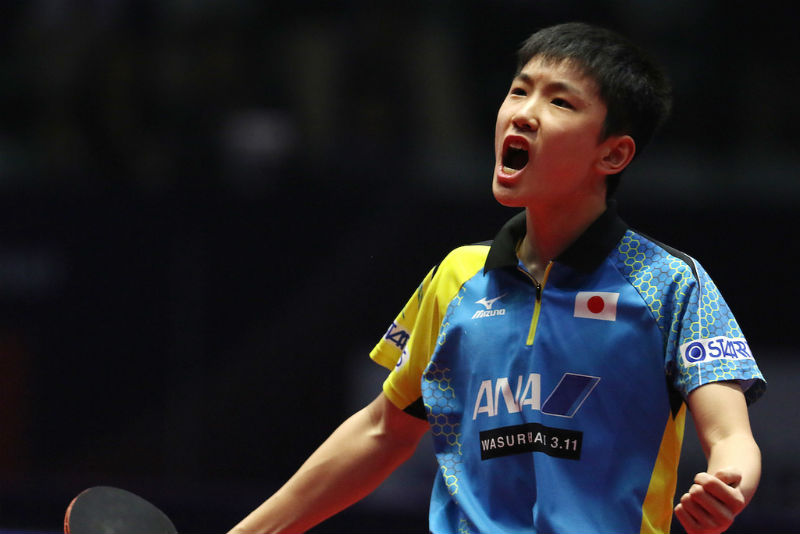
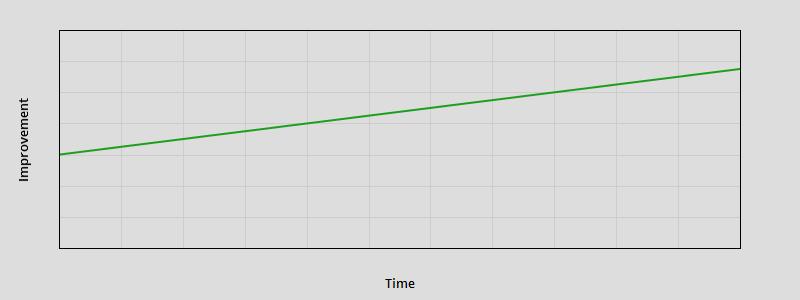
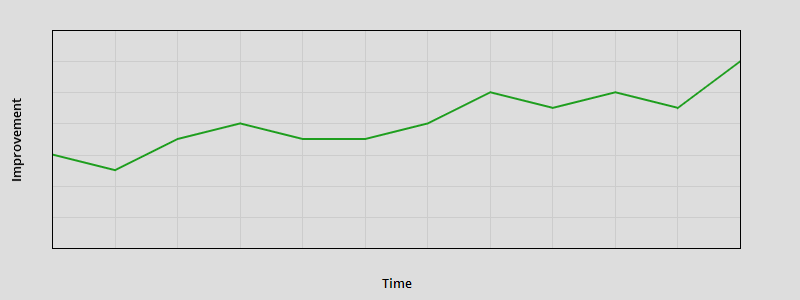
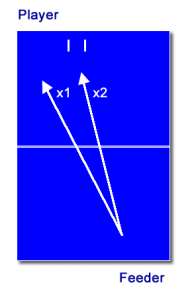 Part 1
Part 1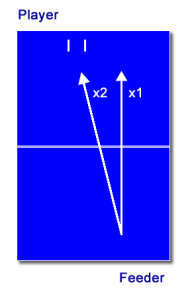 Part 2
Part 2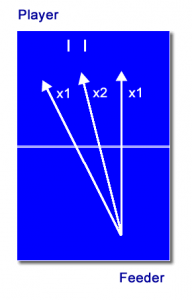 Part 3
Part 3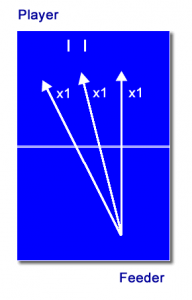 Part 4
Part 4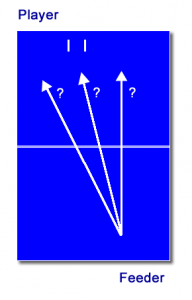 Part 5
Part 5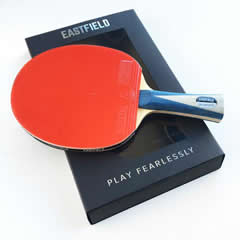
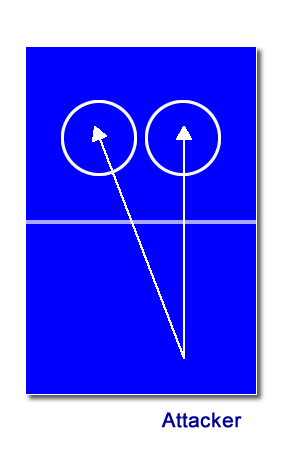 In this diagram, you can see I have drawn two circles in the middle of the table. I’m going to call these the ‘buckets’. In almost all situations, you should avoid attacking to these areas.
In this diagram, you can see I have drawn two circles in the middle of the table. I’m going to call these the ‘buckets’. In almost all situations, you should avoid attacking to these areas.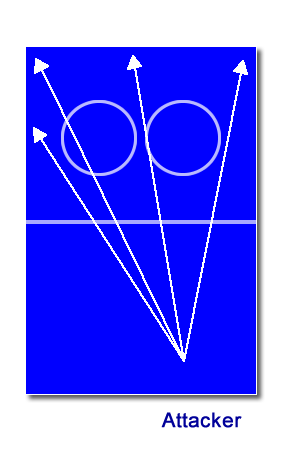 So if attacks to the buckets are no good, what should you do instead? To put your opponent under more pressure, you should try and get your attacks deeper or wider.
So if attacks to the buckets are no good, what should you do instead? To put your opponent under more pressure, you should try and get your attacks deeper or wider.